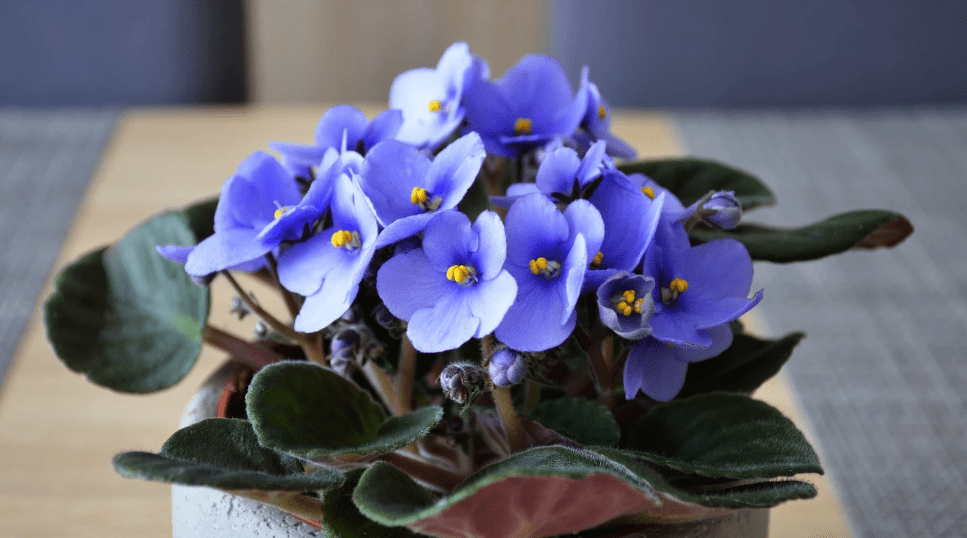
Blue Indoor Plants: Unique Varieties to Enhance Your Decor
Indoor plants are a great way to bring life and color into your home or office, and blue indoor plants offer a unique and eye-catching addition to any space. In this post, we’ll explore a variety of blue indoor plants that can enhance your decor and provide tips on how to care for them. Whether you’re a seasoned plant enthusiast or just starting to incorporate greenery into your space, these unique plants are sure to make a statement.
Table of Contents
ToggleThe Appeal of Blue Indoor Plants
1.Historical and Cultural Significance
Blue indoor plants have a long history of cultural and historical significance. In many cultures, the color blue represents tranquility, peace, and serenity, making it a popular choice for interior decor. Incorporating blue indoor plants into your space can create a calming and soothing atmosphere.
2.Psychological Effects
Studies have shown that the color blue can have a calming and relaxing effect on the mind and body. By incorporating blue indoor plants into your decor, you can create a peaceful and tranquil environment that promotes a sense of well-being and relaxation.
3.Decorative Benefits
In addition to their psychological benefits, blue indoor plants also offer decorative benefits. Their unique color makes them stand out and adds a pop of color to any space. Whether you choose blue foliage or flowers, these plants can add a vibrant and dynamic element to your decor.
Popular Blue Indoor Plant Varieties
1.Blue Star Fern (Phlebodium aureum)
The Blue Star Fern is a unique and captivating plant with silvery-blue fronds that cascade elegantly. This plant is low-maintenance and thrives in low light conditions, making it a perfect choice for indoor spaces.
2.Blue Agave (Agave tequilana)
The Blue Agave plant is known for its striking blue-green leaves and is a popular choice for adding a touch of color to indoor spaces. It is a low-maintenance plant that requires minimal care and can add a touch of desert-chic style to any room.
3.Bluebird Parlor Palm (Chamaedorea elegans ‘Blue Star’)
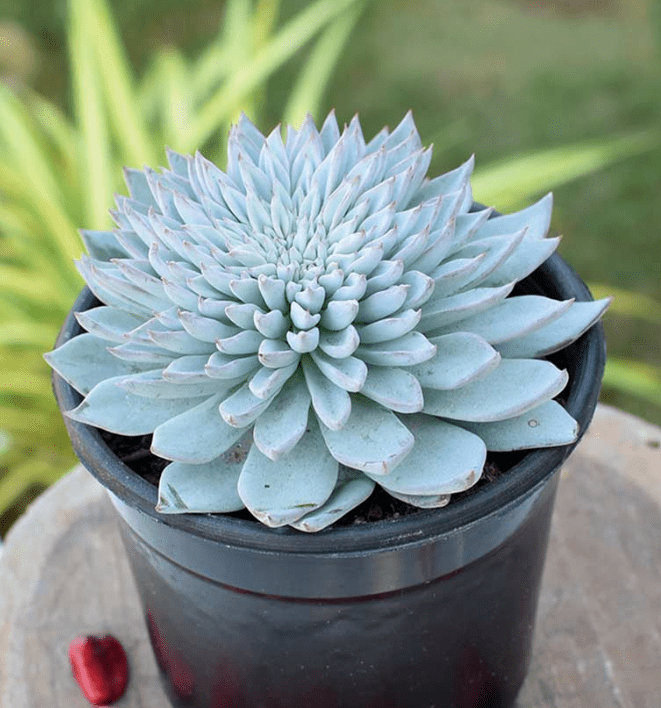
The Bluebird Parlor Palm is a petite palm plant with delicate, blue-green fronds. It is a great choice for adding a tropical and calming vibe to indoor spaces and is easy to care for, making it a popular choice for beginners.
4.Blue Orchid (Phalaenopsis)
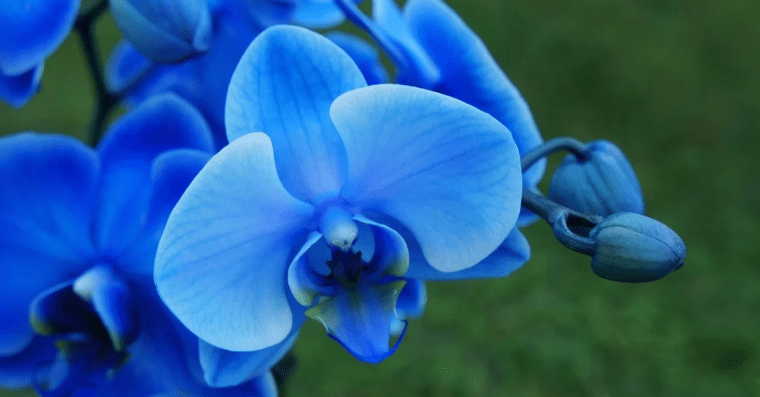
Blue orchids are a stunning and rare addition to any indoor plant collection. With their elegant blue blooms, they add a touch of sophistication and beauty to any space. While they may require a bit more care, the gorgeous blooms are well worth the effort.
5.Blue Echeveria (Echeveria glauca)
The Blue Echeveria is a unique succulent plant with a striking blue-grey color and rosette-shaped leaves. It is a low-maintenance plant that adds a modern and sleek look to any indoor space. Its eye-catching color and interesting texture make it a popular choice for succulent enthusiasts.
6.Blue Pothos (Epipremnum pinnatum ‘Cebu Blue’)
The Blue Pothos is a unique and eye-catching variety of the popular Pothos plant, with striking blue-green leaves. It is a low-maintenance plant that is easy to care for and is a great choice for adding a pop of color to indoor spaces. Its unique color and trailing vines make it a popular choice for plant enthusiasts.
7.Blue Star Creeper (Isotoma fluviatilis)
The Blue Star Creeper is a low-growing ground cover plant with small, star-shaped blue flowers. It is a low-maintenance plant that requires minimal care and can add a touch of desert-chic style to any room. Its delicate blooms and lush green foliage make it a popular choice for adding a pop of color to outdoor spaces.
Lesser-Known Blue Indoor Plants
1.Blue Chalksticks (Senecio serpens)
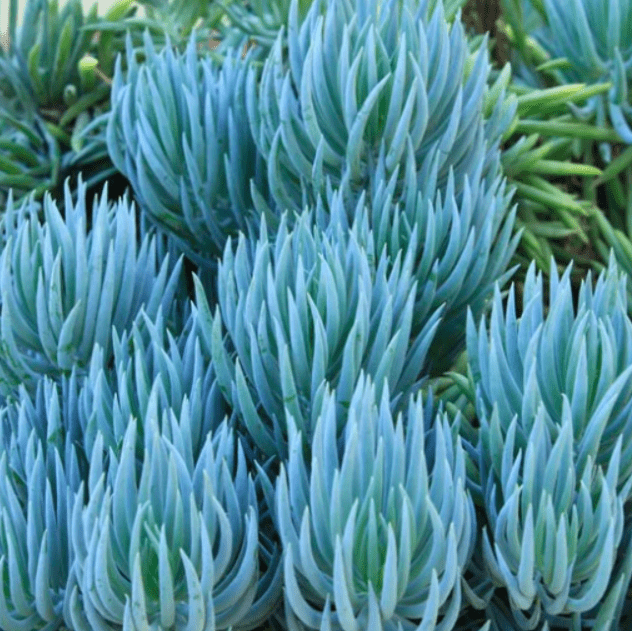
Blue Chalksticks is a unique succulent with striking blue-gray foliage that adds a modern and sleek look to any indoor space. It is a low-maintenance plant that is perfect for adding a pop of color to your home or office. While they may require a bit more care, the gorgeous blooms are well worth the effort.
2.Blue Hoya (Hoya curtisii)
The Blue Hoya is a stunning and unique variety of the popular Hoya plant, with striking blue-green leaves and delicate pink flowers. It is a low-maintenance plant that is perfect for adding a pop of color to indoor spaces. Its eye-catching color and interesting texture make it a popular choice for succulent enthusiasts.
3.Blue Oxalis (Oxalis triangularis)
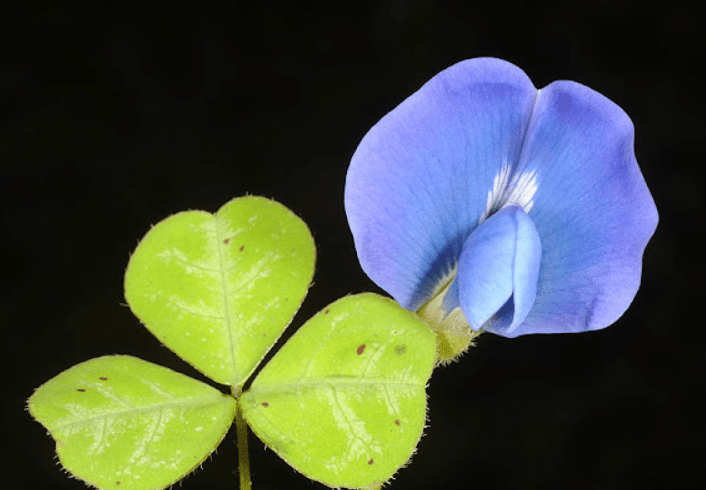
The Blue Oxalis, also known as the Purple Shamrock, is a unique and eye-catching plant with triangular purple leaves. It is easy to care for and can add a touch of color and texture to any indoor space. Its trailing vines make it a popular choice for plant enthusiasts looking to add some visual interest to their home or office.
How to Care for Blue Indoor Plants
1.Light Requirements
Blue indoor plants typically thrive in bright, indirect light. They should be placed near a window where they can receive plenty of natural light, but not be exposed to direct sunlight for extended periods of time.
2.Watering
When it comes to watering, it’s important to allow the soil to dry out slightly between waterings. Overwatering can lead to root rot, so it’s best to water these plants sparingly and ensure good drainage in the pots.
3.Temperature and Humidity
Most blue indoor plants prefer temperatures between 65-75°F and moderate to high humidity levels. It’s important to avoid exposing them to extreme temperature fluctuations or drafty areas.
4.Soil and Fertilizer
A well-draining potting mix is ideal for these plants, and a balanced liquid fertilizer can be applied during the growing season to promote healthy growth.
5.Pruning and Repotting
Regular pruning can help maintain the shape and size of these plants, and repotting may be necessary every 2-3 years to provide them with fresh soil and space to grow.
Decorating Tips with Blue Indoor Plants
1.Choosing the Right Planters
When choosing planters for your Blue Oxalis, opt for ones that complement the eye-catching color of the plant. Consider using pots with interesting textures or patterns to enhance the overall visual appeal.
2.Placement and Arrangement
Consider placing your blue indoor plant in a hanging planter to showcase its trailing vines, or on a shelf to add height and dimension to your space. Grouping multiple blue plants together can create a striking display and add a pop of color to any room.
3.Complementary Colors and Textures
Consider pairing your blue indoor plants with complementary colors and textures to create a cohesive and visually appealing display. For example, pairing them with plants in shades of green or purple can create a harmonious color scheme, while adding in plants with different leaf shapes and textures can add visual interest. Additionally, incorporating decorative rocks or moss around the base of the plants can enhance the overall aesthetic.
4.Combining with Other Plants
Mixing your blue indoor plants with other greenery or flowering plants can create a dynamic and visually interesting arrangement. Consider pairing them with plants of varying heights, textures, and colors to create a balanced and harmonious display.
5.Avoiding Overcrowding
Be mindful of not overcrowding your blue indoor plants, as this can hinder their growth and overall health. Give them ample space to spread out and thrive, and consider rotating their placement in your space to ensure they receive even light exposure.
6.Incorporating Natural Elements
Consider incorporating natural elements like rocks, pebbles, or driftwood into your plant display to enhance the overall aesthetic and create a cohesive look.
7.Seasonal Decor Ideas
During the holiday season, consider adding festive touches to your blue indoor plant display, such as small ornaments, string lights, or seasonal ribbons to create a cheerful and festive look. Additionally, incorporating seasonal elements like pinecones or dried flowers can add a touch of seasonal charm to your indoor plant display. However, it’s important to avoid exposing them to extreme temperature fluctuations or drafty areas, as this can negatively impact their health.
Benefits of Blue Indoor Plants Beyond Aesthetics
1.Air Purification
Blue indoor plants not only add a pop of color and visual interest to a room, but they also offer numerous benefits beyond aesthetics. Many indoor plants, including those with blue foliage, are known for their air-purifying properties. They can help filter out toxins and impurities from the air, creating a healthier indoor environment for you and your family. Some common examples of indoor plants with air-purifying qualities include spider plants, peace lilies, and snake plants. These plants can help improve indoor air quality by removing pollutants and VOCs, and they can also contribute to a sense of well-being and tranquility in your space. Overall, incorporating blue indoor plants into your home decor can have both aesthetic and practical benefits.
2.Mental Health Benefits
Studies have shown that having indoor plants, including those with blue foliage, can have positive effects on mental health. The presence of indoor plants can reduce stress, anxiety, and depression, as well as improve mood and overall well-being. This can be particularly beneficial during the darker winter months when people may experience seasonal affective disorder. Blue indoor plants can help create a calming and soothing atmosphere, which can have a positive impact on your mental health. Additionally, caring for indoor plants can provide a sense of purpose and accomplishment, which can also contribute to improved mental health. Overall, incorporating blue indoor plants into your home decor can have a positive impact on both your physical and mental well-being.
3.Increased Productivity
Having indoor plants, including those with blue foliage, can also lead to increased productivity. Studies have shown that the presence of plants in the workplace can improve concentration, memory retention, and overall cognitive function. This can be especially helpful in office environments or home offices where focus and productivity are important. The calming and soothing effects of blue indoor plants can help create a more relaxed and stress-free work environment, ultimately leading to increased productivity. Additionally, taking care of indoor plants can provide a welcome break from work tasks and serve as a form of mindfulness, which can also contribute to improved productivity. Overall, incorporating blue indoor plants into your workspace can have a positive impact on your ability to focus and get work done.
Common Challenges and Solutions
1.Pests and Diseases
One common challenge in caring for indoor plants is dealing with pests and diseases. Pests such as aphids, spider mites, and mealybugs can infest indoor plants, while diseases such as powdery mildew and root rot can also affect their health. To address these issues, it’s important to regularly inspect your plants for any signs of infestation or disease, and take immediate action to address the issue. This may involve using natural or chemical-based pesticides, as well as adjusting watering and ventilation conditions to prevent the spread of diseases. Proper care and maintenance, such as regularly cleaning leaves and providing adequate airflow, can also help prevent pest and disease problems. Additionally, choosing plants that are less susceptible to pests and diseases can also help mitigate these challenges. Overall, being proactive and attentive in addressing pests and diseases is important for maintaining the health and vitality of your indoor plants.
2.Growth Issues
Another common challenge when caring for indoor plants is dealing with growth issues. This can include issues such as slow growth, leggy growth, or plants becoming too large for their space. To address these challenges, it’s important to provide the right conditions for your plants to thrive. This includes ensuring they have adequate light, water, and nutrients, as well as proper spacing and repotting as needed. Pruning and shaping your plants can also help encourage healthy growth and prevent them from becoming too large or leggy. Additionally, it’s important to research and understand the specific needs of each plant species you have, as different plants have different growth requirements. Overall, addressing growth issues involves providing the right care and attention to ensure your indoor plants can flourish.
3.Maintenance Tips
When it comes to maintaining indoor plants, there are several key tips to keep in mind. Regularly checking for pests and diseases, as mentioned earlier, is important for the overall health of your plants. In addition, it’s important to regularly water and fertilize your plants according to their specific needs, as well as ensuring they have adequate light and proper humidity levels. Regularly cleaning and dusting the leaves of your plants can also help improve their overall health and appearance. It’s also important to monitor the growth of your plants and provide proper pruning and shaping as needed to maintain their size and shape. Lastly, staying attentive and proactive in addressing any issues that arise can help ensure the long-term health and vitality of your indoor plants.
In conclusion, adding blue indoor plants to your decor can bring a unique and refreshing pop of color to any space. Whether you choose a striking blue succulent or a vibrant blue fern, these plants can add a touch of elegance and tranquility to your indoor environment. With the right care and placement, these plants can thrive and become a beautiful focal point in any room. So, if you’re looking to add a splash of color to your home or office, consider adding some unique blue indoor plants to your decor.
Frequently Asked Questionw
Some unique blue indoor plant varieties include the Blue Star Fern, Blue Chalksticks, and the Blue Echeveria. These plants can add a pop of color to your indoor space and enhance your decor.
Blue indoor plants, like any other plant, require proper care and attention. It’s important to provide them with the right amount of light, water, and nutrients to ensure they thrive in your indoor environment.
You can find blue indoor plants at your local nursery, garden center, or even online. It’s important to do some research on the specific care needs of each plant before purchasing to ensure it’s a good fit for your home.
Yes, like other indoor plants, blue indoor plants can help improve indoor air quality by absorbing toxins and releasing oxygen. They can also help to create a more calming and relaxing atmosphere in your home.
Blue indoor plants may have specific care needs, such as avoiding overwatering or ensuring they receive enough sunlight. It’s important to research and understand the specific care requirements for each variety to ensure they thrive in your home.
Some blue indoor plants, like the Blue Star Fern, can tolerate low light conditions, but it’s important to ensure they still receive some natural light to thrive. Other varieties may require more direct sunlight, so it’s important to consider the specific needs of each plant.
Incorporating blue indoor plants into your decor can add a unique and visually appealing element to your home. They can also help create a calming and tranquil atmosphere, and improve indoor air quality.
Blue indoor plants can complement a variety of decor styles, from modern and minimalist to bohemian and eclectic. Their unique color and texture can add interest to any space and enhance the overall aesthetic of your home.
